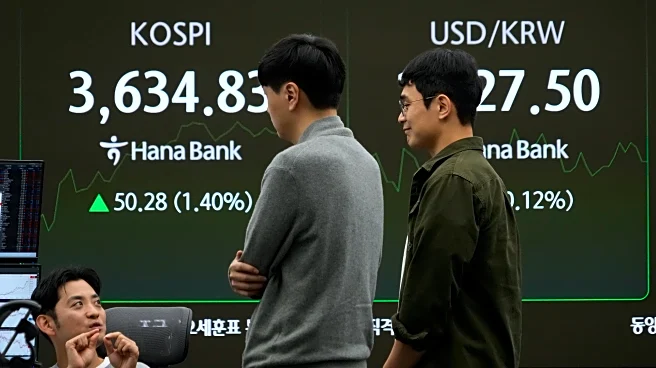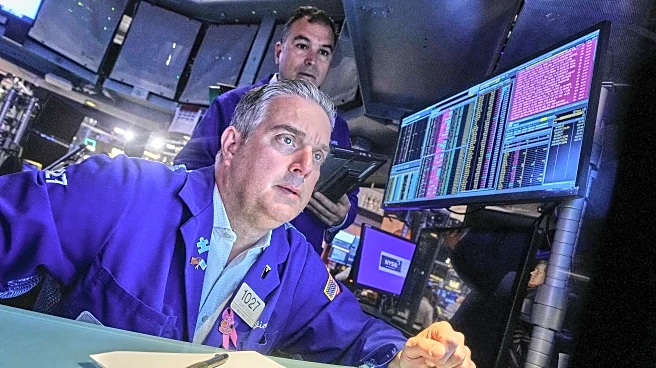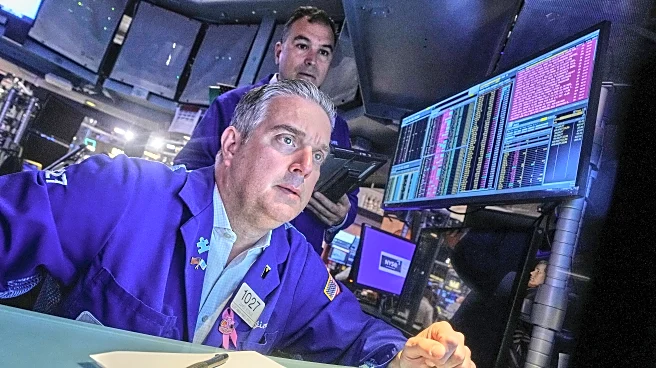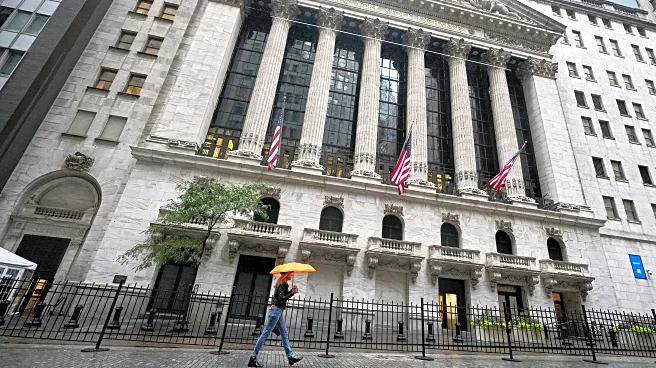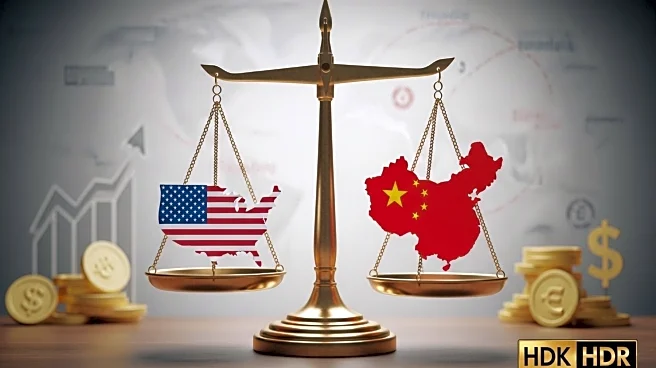What is the story about?
What's Happening?
The U.S. stock market experienced a downturn on Tuesday morning as trade tensions with China escalated. The S&P 500 fell by 0.5%, with technology stocks leading the decline due to their sensitivity to trade issues involving China. The Dow Jones Industrial Average dropped 76 points, or 0.2%, while the Nasdaq composite decreased by 0.9%. This volatility follows a series of sharp market swings, including a significant drop on Friday and a rebound on Monday. The latest dip was triggered by China's Commerce Ministry banning dealings with subsidiaries of South Korean shipbuilder Hanwha Ocean, impacting President Trump's efforts to revitalize the industry in the U.S. The ongoing trade war between the U.S. and China continues to be a major source of market instability.
Why It's Important?
The renewed trade tensions between the U.S. and China have significant implications for the global economy, given the size and influence of both nations. Technology companies, which rely heavily on China for raw materials and manufacturing, are particularly vulnerable to these tensions. The trade conflict could lead to increased costs for consumers if retaliatory tariffs are imposed, potentially affecting economic growth. Additionally, the U.S. government shutdown has halted economic updates, leaving Wall Street reliant on company earnings reports to assess the broader economic picture. The market's volatility underscores the uncertainty surrounding U.S.-China trade relations and their impact on global financial stability.
What's Next?
The market is closely watching upcoming company earnings reports to gauge the broader economic impact of the trade tensions. These reports will provide insight into corporate profits and help determine whether stock prices are justified. The potential for further retaliatory tariffs between the U.S. and China remains a concern, as does the possibility of increased costs being passed on to consumers. Investors and analysts will be monitoring developments in trade negotiations and any changes in tariff policies that could influence market dynamics.
AI Generated Content
Do you find this article useful?



